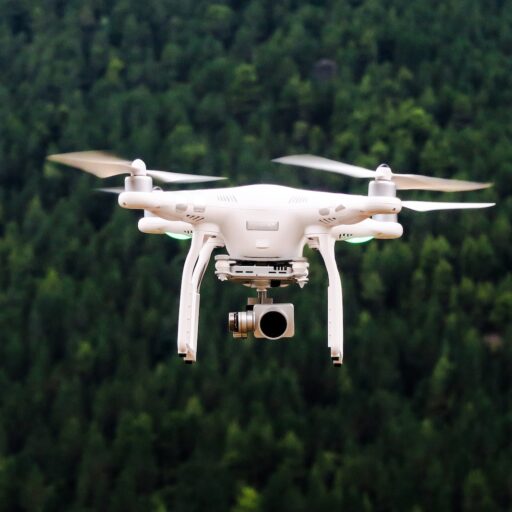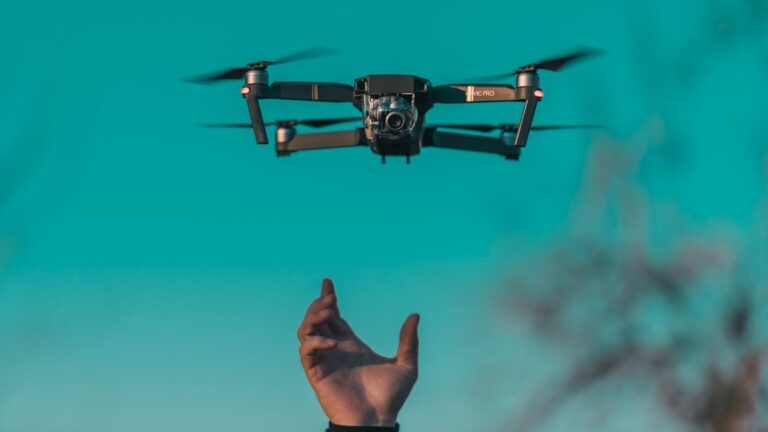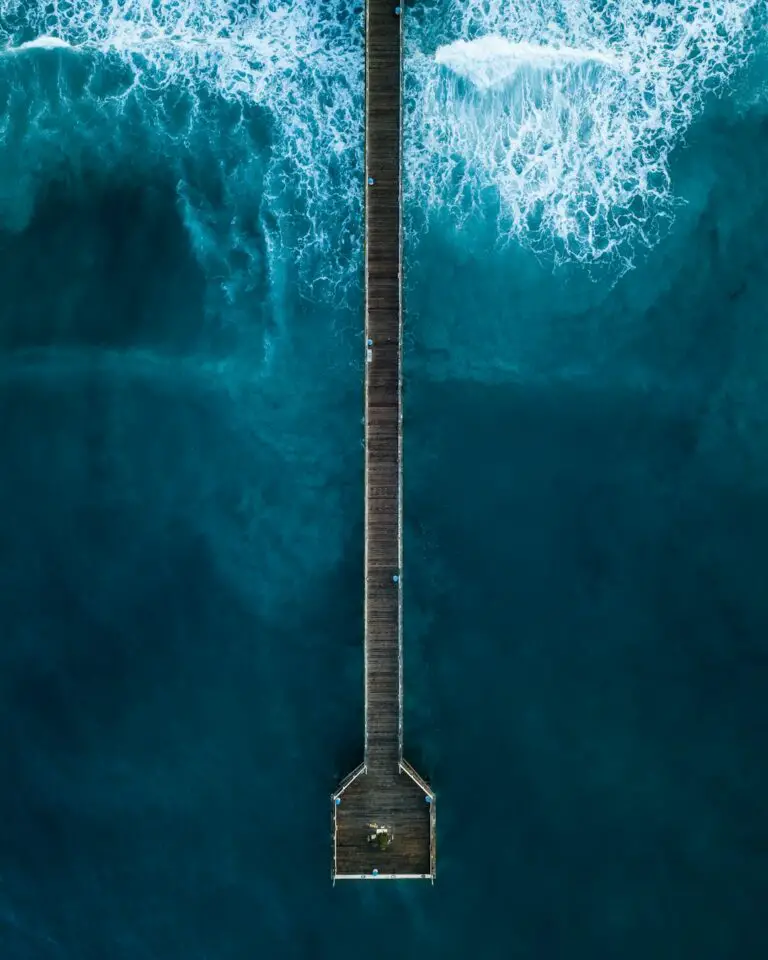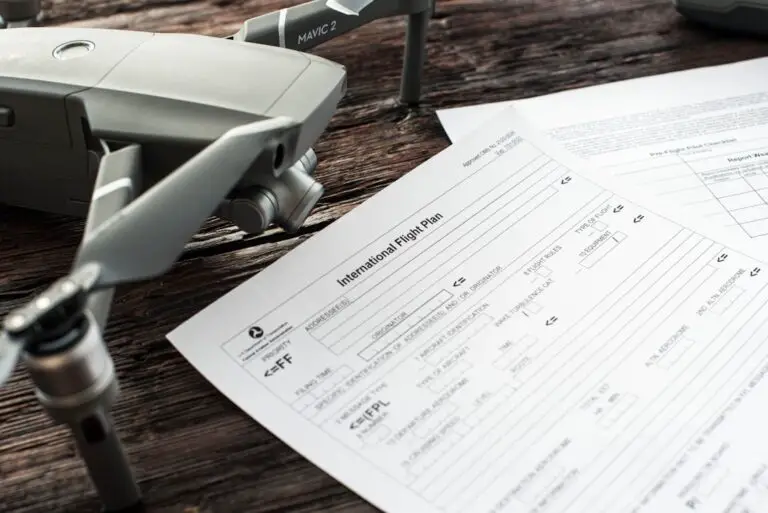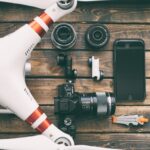Support our educational content for free when you purchase through links on our site. Learn more
Where Can I Fly My Drone? 15 Best Spots & Rules to Know (2025) 🚁
Ever stood in a beautiful open field, drone in hand, wondering, “Can I actually fly here without breaking the rules?” You’re not alone! Navigating the maze of drone flight zones, no-fly areas, and local laws can feel like decoding a secret map. But here’s a fun fact: over 1.7 million drones were registered with the FAA by 2024, making it more important than ever to know where you can safely and legally take to the skies.
In this ultimate 2025 guide, we’ll take you from the basics of drone flight zones to the top 15 best places across the U.S. to launch your drone, plus insider tips on using FAA maps and apps to avoid no-fly zones. Whether you’re a newbie or a seasoned pilot, by the end, you’ll know exactly where to fly your drone and how to do it responsibly—no guesswork required!
Key Takeaways
- Understand FAA airspace classifications and no-fly zones to avoid fines and keep your drone safe.
- Use trusted tools like FAA UAS Facility Maps and B4UFLY app to find legal flying spots near you.
- National parks, airports, and stadiums are usually off-limits, but there are plenty of stunning alternatives.
- Urban and rural areas have different rules—always check local laws and Temporary Flight Restrictions (TFRs).
- Flying responsibly means respecting privacy, safety, and evolving drone regulations.
Ready to unlock the skies? Let’s dive in!
Table of Contents
- ⚡️ Quick Tips and Facts About Flying Your Drone
- 🚀 Drone Flight Zones Explained: Where Can I Fly My Drone?
- 📜 The Evolution of Drone Flight Laws: A Brief History of Drone Regulations
- 🗺️ Navigating Airspace: Understanding FAA UAS Facility Maps (UASFM)
- 🔍 How to Use FAA UAS Facility Maps to Find Safe Drone Flying Spots
- 🌳 Top 10 Best Places to Fly Your Drone in the U.S. (And Why)
- 🏙️ Urban vs. Rural: Where Can You Fly Your Drone Safely?
- 🚫 No-Fly Zones Demystified: How to Avoid Restricted Areas
- 📱 Must-Have Apps and Tools for Finding Drone-Friendly Locations
- 🛠️ Tips and Tricks: Preparing for Your First Flight in a New Location
- 🌐 International Drone Flight: Where Can You Fly Abroad?
- 📋 Legal Must-Knows: FAA Rules, Local Laws, and Permits
- 🎥 Capturing the Moment: Best Practices for Drone Photography and Videography Locations
- 🛡️ Safety First: How to Fly Responsibly and Respect Privacy
- 🔄 Updates and Changes: Staying Current with Drone Flight Regulations
- 📚 Recommended Links for Drone Pilots
- ❓ Frequently Asked Questions About Where to Fly Your Drone
- 📖 Reference Links and Resources
- 🏁 Conclusion: Your Ultimate Guide to Flying Your Drone Anywhere
Quick Tips and Facts About Flying Your Drone
To get started with flying your drone, it’s essential to understand the basics of drone flight regulations. Check out our related article about Where Can I Fly My Drone? 10 Must-Have Apps for 2025 🛸 for more information. Here are some quick tips and facts to keep in mind:
- Always check the FAA’s drone map to ensure you’re flying in an allowed area.
- Keep your drone within line of sight to maintain control and avoid accidents.
- Never fly over groups of people or moving vehicles to minimize risks.
- Stay below 400 feet to avoid interfering with manned aircraft.
- Be aware of Temporary Flight Restrictions (TFRs), especially around stadiums and racetracks.
- Respect privacy and ethics when flying your drone, and avoid conducting surveillance or photographing individuals without permission.
For more information on drone laws and regulations, visit our category page on Drone Laws and Regulations.
Drone Flight Zones Explained: Where Can I Fly My Drone?
Understanding drone flight zones is crucial to ensure safe and responsible flying. The Federal Aviation Administration (FAA) provides a drone map that outlines allowed and restricted areas. You can check the FAA’s drone map on their website or through the B4UFLY app.
Here are some key things to know about drone flight zones:
- Recreational flying: Allowed in most areas, but check for restrictions and follow safety guidelines.
- Commercial flying: Requires a remote pilot certification and adherence to specific regulations.
- Restricted areas: Include national parks, airports, and areas with Temporary Flight Restrictions (TFRs).
To learn more about drone flight zones and regulations, visit the FAA website or check out our article on Drone Industry News.
The Evolution of Drone Flight Laws: A Brief History of Drone Regulations

Drone regulations have evolved significantly over the years. From the early days of recreational flying to the current commercial and
Here’s a brief overview:
- Early days: Drone flying was largely unregulated, with few restrictions on recreational flying.
- 2015: The FAA introduced the first set of drone regulations, including the requirement for recreational flyers to register their drones.
- 2016: The FAA introduced the Part 107 rule, which governs commercial drone flying.
- 2020: The FAA introduced the Remote ID rule, which requires drones to broadcast their identity and location.
For more information on the history of drone regulations, check out our article on Drone Laws and Regulations.
Navigating Airspace: Understanding FAA UAS Facility Maps (UASFM)
The FAA UAS Facility Maps provide a detailed overview of airspace restrictions and allowed areas. These maps are essential for both recreational and commercial drone flyers.
Here’s how to use the maps:
- Visit the FAA website and access the UAS Facility Maps.
- Enter your location and zoom in to view restricted areas.
- Check for Temporary Flight Restrictions (TFRs) and other restrictions.
To learn more about navigating airspace, check out our article on Drone Brand Guides.
How to Use FAA UAS Facility Maps to Find Safe Drone Flying Spots
Using the FAA UAS Facility Maps is straightforward. Here’s a step-by-step guide:
- Visit the FAA website and access the UAS Facility Maps.
- Enter your location and zoom in to view restricted areas.
- Check for Temporary Flight Restrictions (TFRs) and other restrictions.
- Look for allowed areas, such as parks or open fields.
- Always follow safety guidelines and regulations when flying your drone.
For more information on finding safe drone flying spots, check out our article on Beginner Drones.
Top 10 Best Places to Fly Your Drone in the U.S. (And Why)
Here are the top 10 best places to fly your drone in the U.S.:
- Grand Canyon, Arizona – Breathtaking views and stunning landscapes.
- Yellowstone National Park, Wyoming – Geysers, hot springs, and diverse wildlife.
- Zion National Park, Utah – Red rock canyons and unique rock formations.
- Golden Gate Bridge, California – Iconic bridge and stunning San Francisco views.
- New York City, New York – Skyscrapers, landmarks, and bustling streets.
- Las Vegas, Nevada – Vibrant nightlife and stunning desert landscapes.
- Maui, Hawaii – Tropical beaches, waterfalls, and volcanic landscapes.
- Sedona, Arizona – Red rock formations and stunning desert landscapes.
- Asheville, North Carolina – Blue Ridge Mountains and vibrant arts scene.
- San Diego, California – Beaches, parks, and stunning coastal views.
To learn more about these locations and plan your next drone flying adventure, check out our article on Drone Business Opportunities.
Urban vs. Rural: Where Can You Fly Your Drone Safely?
When it comes to flying your drone, urban and rural areas have different regulations and restrictions. Here’s a breakdown:
- Urban areas: More restrictions, such as no-fly zones around airports and stadiums.
- Rural areas: Fewer restrictions, but still check for Temporary Flight Restrictions (TFRs) and other regulations.
To learn more about urban and rural drone flying, check out our article on Drone Industry News.
No-Fly Zones Demystified: How to Avoid Restricted Areas
No-fly zones are areas where drone flying is prohibited or restricted. Here’s how to avoid them:
- Check the FAA UAS Facility Maps for restricted areas.
- Look for Temporary Flight Restrictions (TFRs) and other regulations.
- Always follow safety guidelines and regulations when flying your drone.
To learn more about no-fly zones, check out our article on Drone Laws and Regulations.
Must-Have Apps and Tools for Finding Drone-Friendly Locations
Here are some must-have apps and tools for finding drone-friendly locations:
- B4UFLY app: Check for restricted areas and Temporary Flight Restrictions (TFRs).
- FAA UAS Facility Maps: Detailed overview of airspace restrictions and allowed areas.
- DroneDeploy: Plan and execute drone flights with ease.
- AirMap: Real-time airspace intelligence and flight planning.
To learn more about these apps and tools, check out our article on Drone Brand Guides.
Tips and Tricks: Preparing for Your First Flight in a New Location
Here are some tips and tricks for preparing for your first flight in a new location:
- Check the weather: Avoid flying in bad weather conditions.
- Familiarize yourself with the area: Check for restricted areas and Temporary Flight Restrictions (TFRs).
- Plan your flight: Use apps and tools to plan and execute your flight.
- Follow safety guidelines: Always follow safety guidelines and regulations when flying your drone.
To learn more about preparing for your first flight, check out our article on Beginner Drones.
International Drone Flight: Where Can You Fly Abroad?
When it comes to flying your drone abroad, regulations and restrictions vary by country. Here are some tips:
- Research local regulations: Check with local authorities for drone flying regulations and restrictions.
- Obtain necessary permits: Obtain necessary permits and licenses to fly your drone.
- Follow safety guidelines: Always follow safety guidelines and regulations when flying your drone.
To learn more about international drone flight, check out our article on Drone Industry News.
Legal Must-Knows: FAA Rules, Local Laws, and Permits
Here are some legal must-knows for drone flying:
- FAA rules: Follow FAA regulations and guidelines for drone flying.
- Local laws: Check with local authorities for drone flying regulations and restrictions.
- Permits: Obtain necessary permits and licenses to fly your drone.
To learn more about legal must-knows, check out our article on Drone Laws and Regulations.
Capturing the Moment: Best Practices for Drone Photography and Videography Locations
Here are some best practices for drone photography and videography locations:
- Scout the location: Check for restricted areas and Temporary Flight Restrictions (TFRs).
- Plan your shot: Use apps and tools to plan and execute your shot.
- Follow safety guidelines: Always follow safety guidelines and regulations when flying your drone.
To learn more about drone photography and videography, check out our article on Drone Brand Guides.
Safety First: How to Fly Responsibly and Respect Privacy
Here are some tips for flying responsibly and respecting privacy:
- Follow safety guidelines: Always follow safety guidelines and regulations when flying your drone.
- Respect privacy: Avoid conducting surveillance or photographing individuals without permission.
- Be aware of your surroundings: Check for restricted areas and Temporary Flight Restrictions (TFRs).
To learn more about safety and privacy, check out our article on Drone Laws and Regulations.
Updates and Changes: Staying Current with Drone Flight Regulations
Drone flight regulations are constantly evolving. Here are some tips for staying current:
- Check the FAA website: Regularly check the FAA website for updates and changes.
- Follow drone industry news: Stay up-to-date with the latest news and developments in the drone industry.
- Attend workshops and seminars: Attend workshops and seminars to learn about the latest regulations and best practices.
To learn more about updates and changes, check out our article on Drone Industry News.
Recommended Links for Drone Pilots
Here are some recommended links for drone pilots:
- FAA website: https://www.faa.gov/
- B4UFLY app: https://www.faa.gov/uas/getting_started/b4ufly
- DroneDeploy: https://www.dronedeploy.com/
- AirMap: https://uavcoach.com/airmap-closes-app/
Frequently Asked Questions About Where to Fly Your Drone
Here are some frequently asked questions about where to fly your drone:
- Q: Where can I fly my drone? A: Check the FAA UAS Facility Maps for restricted areas and allowed areas.
- Q: What are the rules for flying a drone? A: Follow FAA regulations and guidelines for drone flying.
- Q: Do I need a permit to fly my drone? A: Obtain necessary permits and licenses to fly your drone.
To learn more about frequently asked questions, check out our article on Drone Laws and Regulations.
Reference Links and Resources
Here are some reference links and resources:
- FAA website: https://www.faa.gov/
- B4UFLY app: https://www.faa.gov/uas/getting_started/b4ufly
- DroneDeploy: https://www.dronedeploy.com/
- AirMap: https://uavcoach.com/airmap-closes-app/
Conclusion: Your Ultimate Guide to Flying Your Drone Anywhere

So, where can you fly your drone? The answer is: it depends—on your location, the airspace rules, and the purpose of your flight. But don’t let that intimidate you! With the right tools, knowledge, and respect for regulations, you can enjoy the thrill of aerial adventures almost anywhere.
Throughout this guide, we’ve demystified drone flight zones, explained how to use FAA UAS Facility Maps, and shared tips on finding the best spots—whether urban rooftops or wide-open rural fields. We’ve also emphasized the importance of flying responsibly and respecting privacy, because with great drone power comes great responsibility.
Remember the question we teased earlier: Can you fly your drone anywhere you want? The short answer is no, but with apps like B4UFLY and AirMap, plus FAA maps at your fingertips, you’ll always know where you can safely take off and capture stunning footage.
If you’re a beginner, start with open spaces away from airports and crowds. If you’re a seasoned pro, explore those breathtaking national parks and urban landmarks—but always check for Temporary Flight Restrictions (TFRs) and local laws first.
In summary:
- ✅ Use FAA resources and apps to find legal flying zones.
- ✅ Respect no-fly zones and privacy laws.
- ✅ Plan your flights carefully, especially in urban or sensitive areas.
- ✅ Stay updated on changing regulations.
Fly smart, fly safe, and keep those propellers spinning!
Recommended Links for Drone Pilots and Enthusiasts
Ready to gear up or expand your drone knowledge? Here are some top picks and resources:
-
DJI Mavic Air 2 — A favorite for aerial photography and ease of use.
👉 Shop DJI Mavic Air 2 on: Amazon | DJI Official Website -
Autel Robotics EVO Lite+ — Great for beginners and pros alike with excellent flight time.
👉 Shop Autel EVO Lite+ on: Amazon | Autel Robotics Official -
B4UFLY App — Essential for checking airspace restrictions.
Download on Apple App Store | Google Play Store -
Books:
- “The Drone Pilot’s Handbook” by Adam Juniper — A comprehensive guide for beginners and pros.
Amazon Link - “Drones For Dummies” by Mark LaFay — Perfect for those starting out.
Amazon Link
- “The Drone Pilot’s Handbook” by Adam Juniper — A comprehensive guide for beginners and pros.
Frequently Asked Questions About Where to Fly Your Drone
Where are the best legal places to fly a drone?
The best legal places are usually open, public spaces away from airports, stadiums, and sensitive government facilities. Think large parks, rural areas, and designated drone flying fields. Always check the FAA UAS Facility Maps and local regulations before flying. National forests and some state parks allow drones but often require permits.
Can I fly my drone in national parks?
❌ Generally, no. The National Park Service prohibits drone flights in all national parks to protect wildlife and visitor experience. However, some state parks or national forests may allow drones with permits. Always verify with the specific park’s regulations before planning your flight.
What are the no-fly zones for drones near airports?
No-fly zones typically extend 5 miles around most airports. Flying within this radius requires prior authorization from the airport’s control tower and the FAA. The FAA’s LAANC system allows drone pilots to request real-time authorization in many areas. Always check the FAA UAS Facility Maps or apps like B4UFLY before flying near airports.
Are there specific drone flying spots for beginners?
✅ Yes! Many communities have designated drone parks or open fields specifically for beginners. These spots offer wide-open spaces free from obstacles and people, perfect for learning. Apps like AirMap and DroneDeploy can help you locate beginner-friendly areas near you.
How do I find drone-friendly parks and open spaces?
Use apps like B4UFLY, AirMap, and DroneDeploy to identify drone-friendly locations. Also, check local government websites for parks with drone permissions. Joining local drone clubs or Facebook groups can provide insider tips on the best spots.
What permissions do I need to fly a drone in urban areas?
Flying in urban areas often requires:
- FAA Part 107 certification if flying commercially.
- Authorization for flights near airports or controlled airspace.
- Local permits or permissions from city authorities or property owners.
- Always respect privacy laws and avoid flying over crowds or private property without consent.
Can I fly my drone over private property?
❌ Flying over private property without permission can violate privacy and trespassing laws. Always seek permission from property owners before flying over their land. Respecting privacy is not just legal compliance but good drone etiquette.
What are the local regulations for flying drones in my city?
Local regulations vary widely. Some cities ban drones in public parks, others require permits, and some have noise or time restrictions. Check your city or county’s official website or contact local law enforcement for specific rules. Staying informed helps you avoid fines and keeps your drone adventures hassle-free.
Reference Links and Resources
For further verification and detailed regulations, consult these authoritative sources:
-
Federal Aviation Administration (FAA) – Drone regulations and airspace maps
https://www.faa.gov/uas -
FAA B4UFLY App – Real-time airspace status and restrictions
https://www.faa.gov/uas/getting_started/b4ufly -
National Park Service – Drone Policy
https://www.nps.gov/articles/unmanned-aircraft-in-the-national-parks.htm?trk=public_post_comment-text -
LAANC (Low Altitude Authorization and Notification Capability) – FAA drone airspace authorization system
https://www.faa.gov/uas/getting_started/laanc -
DroneDeploy – Flight planning and mapping software
https://www.dronedeploy.com/ -
AirMap – Airspace intelligence and flight planning
https://uavcoach.com/airmap-closes-app/ -
Where can I fly my drone in Michigan? – Community discussion and insights
https://www.facebook.com/groups/279868772390043/posts/2574806559562908/ -
Drone Brands™ – Drone Laws and Regulations
https://www.dronebrands.org/category/drone-laws-and-regulations/
Fly safe, stay informed, and enjoy the skies! 🚁
